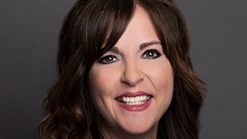Selling a company isn’t easy under any market conditions. But a profitable lender that has grown and laid the groundwork for future growth, has the economic means (e.g., savings) to address deficiencies that need improvement, to demonstrate that they are profitable rather than try to explain why they aren’t, and still keep earning the bottom line while options are being explored, will trade at a premium.
Those interested in buying an originator may want to simplify activities to enable a greater focus on segments where they see the best opportunity for growth, for example, finding the right partnership that would provide the support and structure that retail sales teams require to be successful. A merger or acquisition can leverage its strong products, pricing, and superior customer experience to magnify earnings. Making sure companies have a cultural fit is important.
In fact, some will argue that cultural fit is the most important component of a deal. Any company considering a merger should delve deeply into how the merger will build franchise value. There are many elements beyond the purely financial that are critically important, and these cultural and strategic elements must be considered. They are best assessed by the people who truly know the lender or vendor, namely, the people within the company. Merging lenders and vendors also don’t have to be identical: Differences between merging parties can complement one another and diversify the business model.
Questions To Answer
Questions must be answered. Are the economic engines of the merging parties similar or complementary? What about the product mix: is it complimentary? Is this an opportunity for a vendor or lender to diversify its income stream, or will it lead to problems? Do the merging entities have similar competitive forces and market share in their respective markets? Do the management teams have a similar outlook? Are business customs compatible?
If the merger appears to be a good fit after careful consideration of all things financial and cultural, the next hurdle is one of integration. The customer experience is of paramount priority, but so is the handling of important employees and producers. Management should be decisive about the direction of the new organization and make every effort to integrate the most successful elements from the existing entities into the new organization. The new organization will then grow out of the best of the new and old and should have a good chance for success.
Cultural Compatibility
Anyone thinking about a transaction like this should start by preparing a check list and ranking the factors most critical in the evaluation process. Assess each prospective company against that check list so that you can compare one against the other on an apples-to-apples basis, paying close attention to the corporate culture. While culture is very intangible and subjective, cultural compatibility is the key element of a successful new business relationship. For those lenders that represent serious possibilities, talk to existing and recently-recruited branch managers. Ask their opinion and if they are candid, you can learn a lot.
What are the mechanics of a transaction? Each deal is different, but many have a premium that is partially paid upfront and over an earn out. Paying an owner three times 2020 or 2021’s earnings is unlikely. But a deal incorporating a reasonable proforma of future earnings (including 2022 — 2025) is more suitable.
Any seller should understand the key factors that determine a company’s valuation and typical terms. They should know what to expect during the due diligence and deal process, as well as the legal, regulatory, tax and accounting, operational, and financial implications of selling and acquiring. But for a deal to succeed over the long term, cultural fit and common goals are the critical components.












